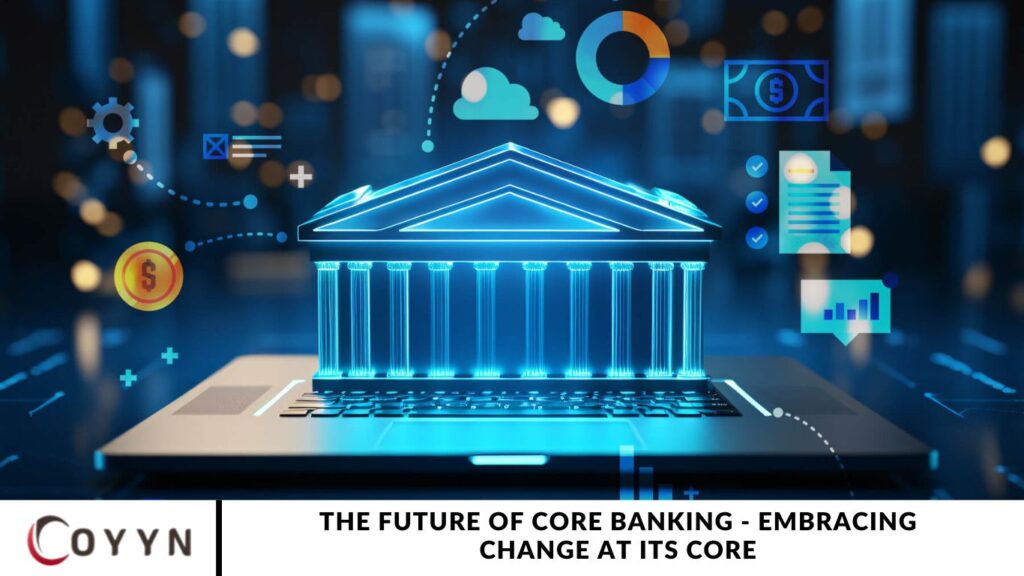Modernize your core banking systems with cloud technology, advanced data analytics, and AI-driven solutions to reduce operational risk, boost efficiency, and deliver customer experiences that drive measurable business value.
The future of core banking lies in its ability to adapt, innovate, and embrace transformation at every level. As digital disruption accelerates and customer expectations rise, traditional banking systems must move beyond legacy frameworks and adopt modern, agile solutions. Embracing change at the core of banking is no longer optional—it is essential for survival and growth.
Table of Contents
Why core banking transformation?
A modern, cloud-enabled core banking system is critical for unlocking growth and enabling next-generation capabilities. However, many banks face challenges due to the limitations of outdated legacy infrastructure. Transitioning to advanced, cloud-native platforms empowers financial institutions to accelerate innovation, introduce new products and services, embrace agile business models, minimize legacy-related operational risks, and respond swiftly to evolving market demands.
Core modernization with AI and cloud technologies
Rising macroeconomic pressures, increasing competition, and rapid technological advancements have made core banking transformation a strategic imperative. Today’s banks have both the motivation and the means to modernize by investing in interoperable frameworks and modular architectures. By embracing cloud-native infrastructure, data-driven intelligence, and AI-powered capabilities, financial institutions are building flexible, decoupled core systems and fostering strong partnerships with industry and technology leaders to drive long-term innovation and resilience.
What you can do
Build a strong case for change with clear metrics.
Modernizing core banking systems is a clear and essential step when assessed through a strategic, enterprise-wide lens. However, the transformation journey should begin with a clear definition of the risks, challenges, and potential impacts tied to legacy infrastructure. Establishing a compelling case for change starts with transparency—fostering internal alignment through open communication, collaborative planning, and a shared understanding of both the risks of inaction and the tangible benefits modernization can deliver.
Think big and start small.
Successful core banking modernization begins with a clear vision of the future-state IT architecture—extending beyond just core systems—to shape a comprehensive transformation roadmap. By aligning each step with this strategic “north star,” banks can execute a phased approach that minimizes risk, optimizes investment, and delivers measurable business value along the way.
Embrace interoperability and composability.
To stay competitive in a rapidly shifting market, banks must prioritize interoperability and composability across their business and IT landscapes. High modularity and adaptability empower organizations to evolve with agility. Interoperable architectures enable the creation of a hybrid core, where legacy systems and next-generation platforms coexist and integrate seamlessly. This approach not only mitigates transformation risks but also ensures a tailored, future-ready foundation aligned with strategic goals.
Unlock the legacy code with generative AI.
Generative AI presents a transformative opportunity for banks to accelerate core modernization by replacing complex legacy COBOL code with streamlined, flexible programs that align with modern technology strategies.
Build the key capabilities required for the future.
Modernizing the core requires more than just technology—it demands a new skill set and a firm grasp of change management, communication, and strategic collaboration. To drive rapid results and long-term value, banks must ensure access to skilled professionals who can navigate complexity, foster innovation, and support sustainable transformation.
Always-On Banking Infrastructure

Modern core banking systems achieve exceptional reliability through distributed cloud architectures, which distribute operations across multiple data centers. This design minimizes the risk of system-wide outages, ensuring continuity even if one location faces disruptions.
Robust cybersecurity is a key feature, leveraging multifactor authentication, data encryption both at rest and in transit, and continuous security monitoring. These advanced security protocols safeguard customer data and help maintain strict compliance with financial regulations.
Additionally, regulatory compliance is seamlessly managed using specialized software that tracks evolving requirements and automates reporting processes. Modern core banking technology empowers fintech companies to stay agile in response to regulatory changes while significantly reducing the burden of manual compliance tasks.
Regulatory Changes
As banking regulations continue to evolve, staying compliant with these guidelines has always posed a significant challenge for banks and their core banking systems. Adherence to regulatory standards is crucial not only to avoid penalties but also to maintain customer trust and confidence. With the rapid advancement of technology, compliance challenges have become more complex, particularly in areas such as data privacy laws and cybersecurity requirements. Protecting customer data through robust security measures has become a top priority for banks to ensure both regulatory compliance and the safeguarding of sensitive information.
Customer-Centric Banking
Offering personalized services has become a critical necessity, not just an option. Banks are focused on enhancing customer experiences by delivering tailored solutions that cater to individual needs. Personalization in banking includes custom product recommendations, relevant offers, and prompt responses to customer inquiries. Building trust through transparent communication is essential to earning and maintaining customer loyalty. Modern core banking systems play a pivotal role in delivering exceptional user experiences (UX), ensuring that customers enjoy seamless, intuitive interactions with their bank, ultimately fostering long-term relationships.
Frequently Asked Question
What does “core banking” mean in the context of modern banking?
Core banking refers to the central systems that enable banks to perform their primary functions, such as managing accounts, transactions, and customer information. In modern banking, core systems are evolving to include digital capabilities like real-time processing, cloud integration, and AI-driven solutions.
Why is core banking modernization so crucial for banks?
Modernizing core banking systems is crucial for banks to stay competitive, enhance customer experiences, reduce operational costs, and ensure regulatory compliance. It enables banks to embrace new technologies, improve agility, and streamline operations for better service delivery.
What role does cloud technology play in core banking modernization?
Cloud technology offers scalability, flexibility, and cost-efficiency, enabling banks to replace legacy systems with more dynamic, cloud-enabled platforms. This transition reduces operational risks, enhances security, and facilitates innovation by providing easier access to data and advanced analytics.
How does AI contribute to the future of core banking?
Artificial intelligence (AI) enhances core banking systems by automating routine tasks, improving decision-making through data insights, and offering personalized customer experiences. AI also strengthens fraud detection, risk management, and operational efficiency within the banking system.
What are the key challenges in modernizing core banking systems?
Core banking modernization can face challenges such as high initial costs, integration with legacy systems, data migration complexities, regulatory compliance, and ensuring minimal disruption during the transition. However, the long-term benefits outweigh these challenges.
How can banks manage risks during core banking system transformation?
Banks can mitigate risks by adopting phased transformation approaches, ensuring robust cybersecurity measures, investing in training, and working with experienced technology partners. Ensuring clear communication and collaboration across all departments is also crucial for a smooth transition.
What are the benefits of adopting modular core banking systems?
Modular core banking systems offer greater flexibility, allowing banks to integrate new technologies, scale services, and customize their systems to meet changing market demands. They also reduce dependency on a single vendor and make it easier to innovate without overhauling the entire infrastructure.
Conclusion
The future of core banking is undeniably tied to embracing change and leveraging cutting-edge technologies like cloud computing, artificial intelligence, and data analytics. As banks move away from outdated legacy systems, they are better positioned to enhance operational efficiency, improve customer experiences, and ensure robust security and compliance. The ability to innovate and adapt quickly will be essential for maintaining a competitive edge in the financial industry.
By embracing modernization, banks can create a flexible, agile core that not only meets the evolving needs of their customers but also supports future growth. Core banking systems that prioritize scalability, interoperability, and user experience will pave the way for more innovative, faster, and more secure financial services. As the economic landscape continues to evolve, banks that invest in modern core solutions will be well-equipped to navigate the complexities of the digital age, ensuring long-term success and sustainability.


